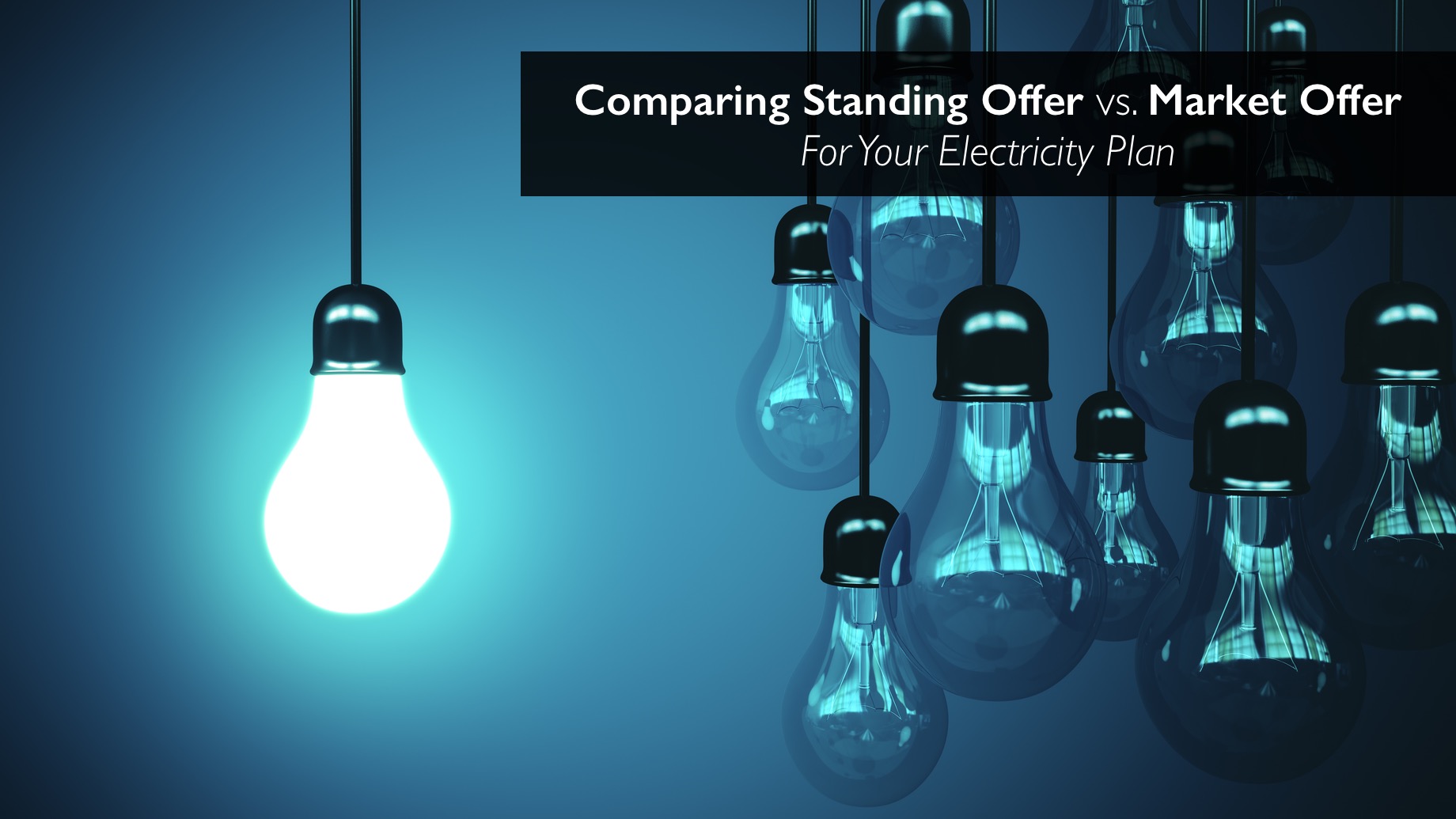
As you compare electricity plans, there are two types to consider: standing offer and market offer. The best type for you depends on your usage habits and the state in which you live.
Shopping for an electricity plan involves taking in a lot of information. Figure out what type of contract you need and find the best electricity rates.
The first step, though, is to determine which type of plan is available where you live: the standing offer or the market offer.
What Is a Standing Offer?
A standing offer is a plan that the utility company sets. By law, they must offer it to customers. It has a fixed rate, meaning you can lock in an electricity supply at a specific price for one year (for example) if you sign up now.
If you want to switch providers or change your contract length, there may be fees involved.
Typically, under a standing offer, your electricity bill is calculated as:
Price of Electricity X # of kWh Used X Contract Length = Monthly Bill
A Sample Standing Offer Bill for 1000 kWh at $0.15 per kWh and an 18-month length would be: ($0.15) X1000 (kWh) X18 (months) = $270
What Is A Market Offer?
A market offer is a plan that has no fixed rate because the open market determines it. Your electricity supply price is based on demand and availability, so you have more options for contract lengths, including daily contracts. Your bill could fluctuate month-to-month, and you’ll need to keep an eye on it.
Typically, under a market offer, your electricity bill is calculated as:
Price of Electricity X # of kWh Used = Monthly Bill
A Sample Market Offer Bill for 1000 kWh at $0.20 per kWh for a one-month length would be: ($0.20) X 1000(kWh) = $200
How Standing Offers and Market Offers Are Different
Even though they sound similar, standing offers and market offers are very different regarding your rights as a customer. Understanding the differences will help you pick the best electricity deals.
You Have No Price Guarantee with a Market Offer
With a standing offer, you know the price going in. It’s typically more stable than a market offer. You can plan on a specific rate for a set period.
With a market offer, your bill is truly unpredictable because it varies with the demand and availability of electricity from month to month. According to the AEMO, the electricity demand is highest in the morning between 6 a.m. and 9 a.m., with another peak at around 7 p.m. when people get home from work and turn on their appliances, lights, etc.
If you sign up for a market offer, most of your usage will likely fall during the day, while a standing offer may balance out the times you use electricity.
You Might Have Price Guarantees with a Market Offer
Some market offers do provide price guarantees that allow you to receive credits if the wholesale cost of electricity rises above a certain level during your contract length.
You Might Not Be Able To Pay with a Standing Offer
With a standing offer, you can pay the bill in monthly instalments. Many market offers don’t give customers this option unless they also have a standing offer with a separate provider for their home appliances and other on-site energy needs.
You Might Have Fewer Payment Options with a Market Offer
You might have fewer payment options with a market offer than with a standing offer. For example, you can’t pay your electricity bill online with a market offer in some states unless you also have a separate standing offer for home appliances and other on-site energy needs.
Signing Up for a Standing Offer First
In some states, you might have to sign up for a standing offer first before you’re able to enrol in a market offer. This can be frustrating if you’re moving into an apartment and your plan requires signing up with the building’s utility company before you can shop around.
Pay an Exit Fee with a Market Offer
With many market offer contracts, you may have to pay an exit fee if you need to switch providers during the length of your contract. With long-term contracts, companies want to protect their investments while they’re trying to get your business.Standing offers are more stable and predictable than market offers. Still, your bill could be lower with a market offer if there’s a chance that wholesale electricity prices will remain high during your contract length. If you’re not happy with the terms of your market offer, switch to a standing offer or call your current electricity provider and ask about a better deal.